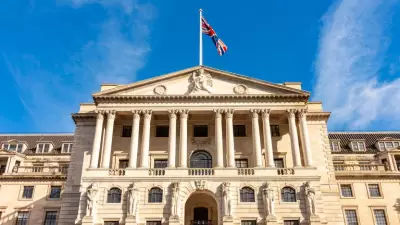
London's commercial property market is facing its most challenging period in over a decade, with office vacancy rates climbing to levels not seen since the global financial crisis. New data reveals a dramatic shift in the capital's working landscape that could have lasting implications for property investors and businesses alike.
The Numbers Tell a Troubling Story
According to the latest market analysis, the overall vacancy rate across central London has surged to 9.1% in the final quarter of 2023. This represents the highest level recorded since 2008, painting a stark picture of an office market in transition. The situation becomes even more concerning when examining specific business districts.
The City of London, traditionally the heart of the capital's financial sector, now contends with a vacancy rate of 10.2%. Meanwhile, Canary Wharf faces even greater pressure at 11.8%, indicating particular challenges for financial services hubs.
Hybrid Working's Lasting Impact
The transformation in working patterns appears to be the primary driver behind this market shift. With hybrid working models becoming firmly established across industries, companies are reassessing their spatial requirements. Many organisations are opting for smaller, higher-quality spaces that better suit flexible working arrangements.
This trend is reflected in the take-up figures, which show a 20% year-on-year decline. The total space occupied during the final quarter reached just 2.3 million square feet, significantly below pre-pandemic averages.
A Tale of Two Markets
Despite the overall downturn, the market displays notable segmentation. Premium, sustainable office spaces in prime locations continue to attract strong interest and command premium rents. However, older buildings lacking modern amenities and environmental credentials are struggling to find tenants.
The flight to quality is accelerating as businesses prioritise spaces that support collaboration, wellbeing, and sustainability. This bifurcation suggests that while the overall market faces challenges, opportunities exist for landlords willing to invest in upgrading their properties.
Regional Variations Within London
The impact varies significantly across different parts of the capital:
- West End: Shows relative resilience with a vacancy rate of 7.9%
- Midtown: Faces moderate pressure at 8.5% vacancy
- Docklands: Experiences the most significant challenges at 14.2%
Future Outlook and Market Adaptation
Property experts suggest this restructuring phase may continue throughout 2024 as the market adjusts to new working norms. Some analysts predict increased conversion of older office stock to alternative uses, including residential and hospitality spaces.
The coming year will be crucial for understanding whether these vacancy rates represent a new normal or a temporary market correction. What remains clear is that London's office landscape is undergoing its most significant transformation in generations, with profound implications for property values, urban planning, and the capital's economic future.





